 If necessary, multiply the given equations by such numbers as will make the coefficients of one of the unknown quantities in the resulting equations of equal absolute value. If necessary, multiply the given equations by such numbers as will make the coefficients of one of the unknown quantities in the resulting equations of equal absolute value.  Academic Algebra - Page 215by George Wentworth, David Eugene Smith - 1913 - 458 pagesFull view Academic Algebra - Page 215by George Wentworth, David Eugene Smith - 1913 - 458 pagesFull view - About this book
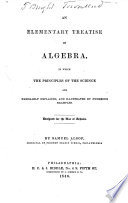 | Samuel Alsop - Algebra - 1846 - 300 pages
...disappear is said to be eliminated. METHOD 2. Multiply one or both of the equations by such number or numbers as will make the coefficients of one of the unknown quantities the same in both ; then add or subtract, according as these terms have different or like signs. By... | |
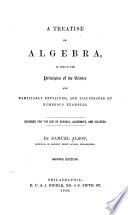 | Samuel Alsop - Algebra - 1848 - 336 pages
...disappear is said to be eliminated. METHOD 2. Multiply one or both of the equations by such number or numbers as will make the coefficients of one of the unknown quantities the same in both ; then add or subtract, according as these terms have different or like signs. By... | |
 | William Smyth - Algebra - 1851 - 272 pages
...addition and subtraction. It consists in multiplying one or both of the equations by such number or numbers as will make the coefficients of one of the unknown quantities the same in both, and then adding or subtracting, according as the terms, the coefficients of which... | |
 | Charles Mansford - 1875 - 110 pages
...illustrations give the following general rule. Multiply each of the equations, where necessary, by such numbers as will make the coefficients of one of the unknown quantities tlie sume in each equation. Then if the signs of this unknown quantity are alike, subtract the щиаtiопз... | |
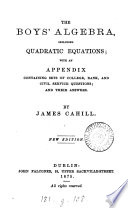 | James Cahill (of Dublin.) - Algebra - 1875 - 230 pages
...Given 3z+4'/=43 \ to find the values 5x — 7y= — 24 J of x and y. Rule Multiply the two equations by such numbers as will make the coefficients of one of the unknown quantities the same in both the resulting equations, and from these last equations obtain, by addition or subtraction,... | |
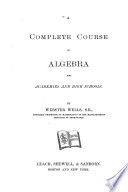 | Webster Wells - Algebra - 1885 - 370 pages
...2. This solution is an example of elimination by subtraction. RULE. Multiply the given equations by such numbers as will make the coefficients of one of the unknown quantities equal. Add or subtract the resulting equations according as the equal coefficients have unlike or like... | |
 | Webster Wells - Algebra - 1885 - 324 pages
...2. This solution is an example of elimination by subtraction. RULE. Multiply the given equations by such numbers as will make the coefficients of one of the unknown quantities equal. Add or subtract the resulting equations according as the equal coefficients have unlike or like... | |
 | Webster Wells - 1885 - 368 pages
...2. This solution is an example of elimination by subtraction. BULE. Multiply the given equations by such numbers as will make the coefficients of one of the unknown quantities equal. Add or subtract the resulting equations according as the equal coefficients have unlike or like... | |
 | Webster Wells - Algebra - 1889 - 584 pages
...2. This solution is an example of elimination by subtraction. BULB. Multiply the given equations by such numbers as will make the coefficients of one of the unknown quantities equal. Add or subtract the resulting equations according as the equal coefficients have unlike or like... | |
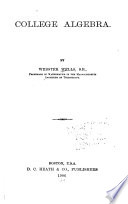 | Webster Wells - Algebra - 1890 - 604 pages
...(1), 15 ж + 16 = 115ж = -15. Whence, x = — 1. RULE. If necessary, multiply the given equations by such numbers as will make the coefficients of one of the unknown quantities in the resulting equations of equal absolute value. Add or subtract the resulting equations according... | |
| |